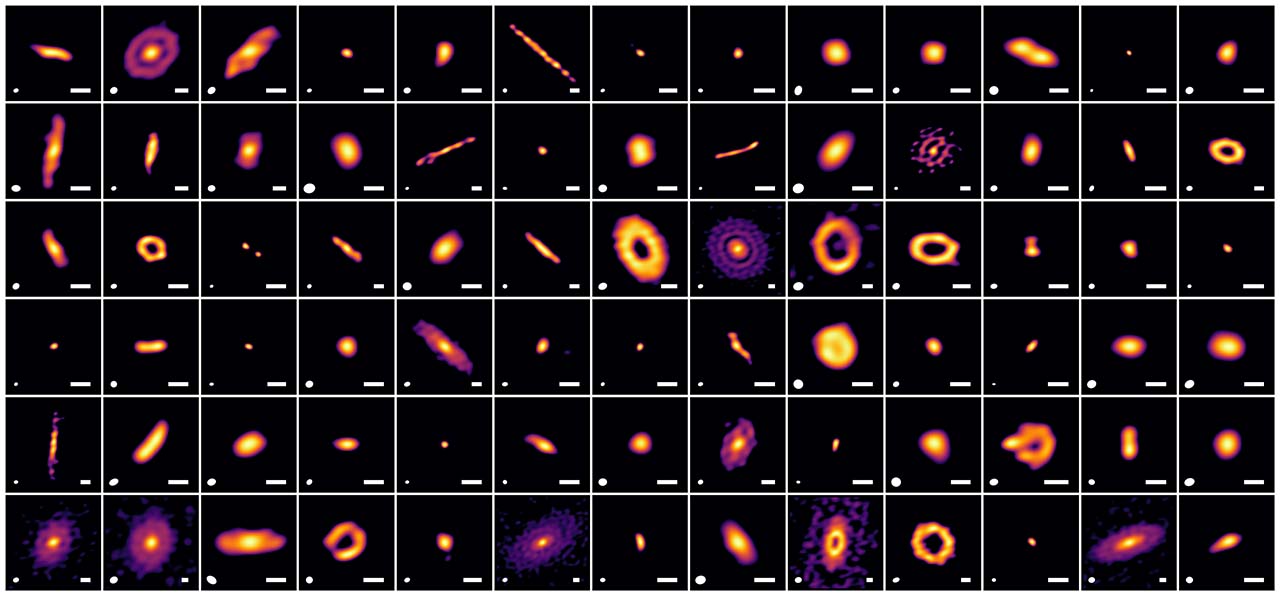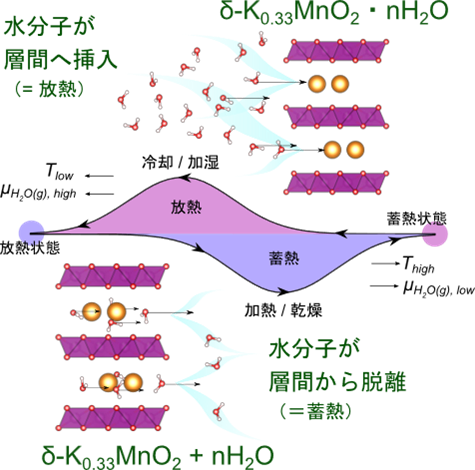2025-06-24 国立天文台

へびつかい座の星形成領域に分布する原始惑星系円盤の画像。各パネルの、左下の楕円(だえん)のマークは解像度を表し、小さいほど解像度が高いことを意味しています。右下の白線は30天文単位を表す目盛りです。左列から右列へ向かって、また同じ列では上から下へと、中心の恒星の年齢は高くなり、円盤の構造の進化が進んでいます。(クレジット:ALMA(ESO/NAOJ/NRAO), A. Shoshi et al.) 画像(927KB)
<関連情報>
- https://www.nao.ac.jp/news/science/2025/20250624-alma.html#top
- https://alma-telescope.jp/news/press/cradle-202506.html
- https://academic.oup.com/pasj/article/77/3/572/8117664
ALMAによるへびつかい座クラスI/フラットスペクトル/IIディスクの2次元超解像画像調査。I. 新たなディスク下部構造の発見 ALMA 2D super-resolution imaging survey of Ophiuchus Class I/flat spectrum/II disks. I. Discovery of new disk substructures
Ayumu Shoshi , Masayuki Yamaguchi , Takayuki Muto , Naomi Hirano , Ryohei Kawabe , Takashi Tsukagoshi , Masahiro N Machida
Publications of the Astronomical Society of Japan Published:22 April 2025
DOI:https://doi.org/10.1093/pasj/psaf026
Abstract
This study focuses on Class I, flat spectrum (FS), and Class II disks in the Ophiuchus molecular cloud, a nearby active star-forming region with numerous young stellar objects, to unveil signs of substructure formation in these disks. We employ two-dimensional super-resolution imaging based on sparse modeling for ALMA archival Band 6 continuum data, achieving images with spatial resolutions comparable to a few au (0.′′02–0.′′2) for 78 dust disks, all of which are spatially resolved. In our sample, we confirm that approximately 30%–40% of the disks exhibit substructures, and we identify new substructures in 15 disks (four Class I, seven Class FS, and four Class II objects). Compared to the eDisk sample in terms of bolometric temperature, Tbol, our targets are in a later accretion phase. By combining our targets with the eDisk sample, we confirm that substructure detection in available data is restricted to objects where Tbol exceeds 200–300 K and the dust disk radius, Rdust, is larger than ∼30 au. Moreover, we find that the distribution of inclination angles for Class II disks has a deficit of high values and is not consistent with being random. Analyzing molecular line emission data around these objects will be crucial to constrain disk evolutionary stages further and understand when and how substructures form.



